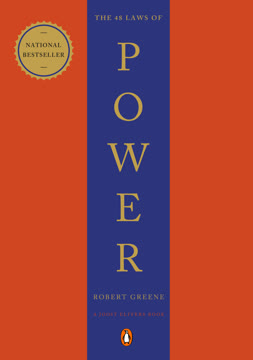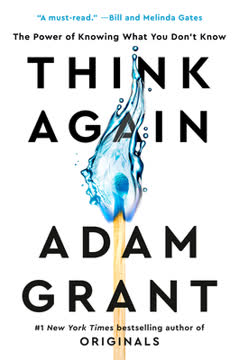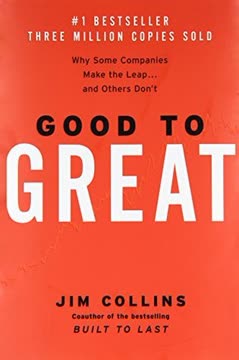Key Takeaways
1. Solve Your Own Problem: The Genesis of Successful Startups
I guess my advice is: solve a problem that you have, first and foremost, and chances are, other people may have the same problem.
Personal pain points spark innovation. Many successful startups, including ONElist and Bloglines, began as solutions to problems the founders themselves experienced. This approach ensures that the product addresses a real need and that the founder deeply understands the problem and potential solutions.
Validate market demand. While solving your own problem is a great starting point, it's crucial to ensure that enough other people share the same pain point. Fletcher initially thought he might be too early with Bloglines, but the rapid user adoption proved otherwise. This underscores the importance of testing your assumptions and being open to pivoting based on user feedback.
2. Bootstrap and Stay Lean: Minimize Costs and External Funding
Doing startups like this is so cheap that it just doesn't require a lot of money. I think I put in a total of $200,000. And I didn't do it nearly as smartly as I could have.
Leverage cost-effective technologies. Fletcher emphasizes the importance of using virtual dedicated hosting services instead of buying hardware. This approach not only reduces upfront costs but also provides flexibility and scalability as the startup grows.
Self-funding advantages. By bootstrapping Bloglines, Fletcher maintained control over the company's direction and avoided the complexities of dealing with external investors. This allowed him to focus on product development and user growth without the pressure of meeting investor expectations.
- Utilize cloud services and open-source tools
- Outsource non-core functions
- Prioritize features ruthlessly
- Keep the team small and efficient
3. Release Early, Iterate Often: Embrace User Feedback
The great thing about user-based Internet services is that they don't have to be perfect. You got a bug, you can fix it in 5 minutes. You don't have to worry about upgrading everybody's software installation.
Shipping is crucial. Fletcher stresses the importance of overcoming the psychological barrier of releasing an imperfect product. By launching early, startups can start a dialogue with users and gather valuable feedback to guide future development.
User-driven development. Once a product is live, user suggestions become a primary driver of feature development. This approach not only ensures that the product evolves to meet user needs but also fosters user loyalty as they see their input being implemented.
- Launch with core functionality
- Implement user feedback quickly
- Prioritize features based on user demand
- Communicate updates and improvements to users
4. Focus on Users First, Business Model Later
My philosophy on these types of companies—consumer-based Internet companies—is that you don't need to worry about the business model initially. If you get users, then everything else follows.
User growth trumps monetization. For consumer internet companies, Fletcher argues that building a large user base should be the primary focus in the early stages. A significant user base provides value that can be monetized later and makes the company attractive to potential acquirers.
Flexibility in business models. By prioritizing user growth, startups maintain the flexibility to explore various monetization strategies as they scale. This approach allows for a deeper understanding of user behavior and preferences, which can inform more effective business models down the line.
- Focus on user acquisition and engagement metrics
- Experiment with different features to drive growth
- Build a loyal user community
- Keep an eye on potential monetization strategies for the future
5. Founders Need Diverse Skills: Technical and Product Knowledge
I like to think I have a little bit of product knowledge, which helps me develop these websites. A lot of engineers don't necessarily have that skill set, but they are better engineers than I am, so for those people, if they were to partner up with somebody who was a product designer, I think that probably helps out a lot.
Balance technical and product skills. While strong technical skills are crucial for building a product, Fletcher emphasizes the importance of product knowledge in developing successful websites. This combination allows founders to make informed decisions about feature development and user experience.
Complementary partnerships. For founders who excel in one area but lack in another, finding a co-founder or early employee with complementary skills can be beneficial. This ensures that both the technical and product aspects of the startup are well-covered.
- Assess your own strengths and weaknesses
- Seek partners or early hires with complementary skills
- Continuously learn and expand your skill set
- Foster a culture of cross-functional collaboration
6. Venture Capital: A Double-Edged Sword
I'd done that with ONElist, and I wanted to do it differently this time. It was kind of, "Let's see what I can do." Because I fully believed in the thesis of "these companies can be really cheap to run if you do it with even just a little bit of intelligence."
Understand the implications. Fletcher's experiences with ONElist taught him the complexities of dealing with venture capital. While VC funding can provide resources for rapid growth, it also comes with expectations and potential loss of control.
Consider alternatives. With Bloglines, Fletcher chose to self-fund, demonstrating that it's possible to build a successful startup without significant external investment. This approach allowed him to maintain control and flexibility in decision-making.
- Weigh the pros and cons of VC funding
- Explore alternative funding options (bootstrapping, angel investors, crowdfunding)
- If taking VC money, carefully review and negotiate term sheets
- Build relationships with potential investors before you need funding
7. Scaling Challenges: Be Prepared for Rapid Growth
We were growing so fast with ONElist—a percent-and-a-half a day for the first year or two. We had a million users at 11 months, which in '98 was an amazing thing. We had horrible scaling problems the first year.
Anticipate growth. Rapid user growth can lead to significant technical challenges. Fletcher's experience with ONElist highlights the importance of building scalable systems from the start and being prepared to handle unexpected success.
Invest in infrastructure. While staying lean is important, it's crucial to invest in robust infrastructure and monitoring systems to prevent downtime and ensure a smooth user experience as the user base grows.
- Design for scalability from the beginning
- Implement monitoring and alerting systems
- Plan for redundancy and fault tolerance
- Regularly stress test your systems
8. The Power of Press and Word-of-Mouth Marketing
We got really lucky because blogs in general started to become really big and the downturn was ending, so you had all of these people looking for the next big thing. Also a lot of reporters used Bloglines. They like to talk about things they use, so we got really fortunate in that regard.
Leverage timely trends. Bloglines benefited from the rising popularity of blogs and the tech industry's search for new innovations. Identifying and aligning with emerging trends can significantly boost a startup's visibility and user adoption.
Cultivate media relationships. Fletcher notes the disproportionate amount of press Bloglines received relative to its user base. This highlights the value of building relationships with journalists and creating a product that appeals to influencers in your industry.
- Stay attuned to industry trends and emerging technologies
- Create a compelling narrative around your product
- Target influencers and early adopters in your marketing efforts
- Encourage and facilitate user-generated content and testimonials
9. Startup Life: High Risk, High Reward, All-Consuming
Startups are just so amazingly fun; they are so amazingly stressful. Whether you are an engineer or whether you are a founder, at least for me, it takes every emotion you've got and multiplies it 100-fold. Higher highs, lower lows than any other work experience.
Emotional rollercoaster. Fletcher candidly describes the intense emotional experience of running a startup. The highs of success and the lows of setbacks are amplified, requiring founders to develop resilience and emotional stability.
Work-life balance challenges. The all-encompassing nature of startup life can strain personal relationships and lead to burnout. Fletcher advises starting a company when you're young and have fewer personal commitments, acknowledging the sacrifices often required for success.
- Develop coping mechanisms for stress
- Build a support network of fellow entrepreneurs
- Set boundaries to maintain some work-life balance
- Celebrate small victories to maintain motivation
- Be prepared for the emotional and physical toll of startup life
Last updated:
FAQ
What's Founders at Work about?
- Startup Stories: Founders at Work by Jessica Livingston is a collection of interviews with successful startup founders, detailing their early experiences, challenges, and lessons learned.
- Diverse Perspectives: The book features a variety of founders, including those from companies like PayPal, Hotmail, and Flickr, offering a broad view of the startup landscape.
- Real-World Advice: Each interview provides practical advice and anecdotes, making it a valuable resource for aspiring entrepreneurs.
Why should I read Founders at Work?
- Inspiration for Entrepreneurs: The book offers firsthand accounts from successful entrepreneurs, which can inspire and motivate readers to pursue their own startup dreams.
- Practical Insights: Readers gain access to real-world insights into the startup process, including perseverance, adaptability, and understanding market needs.
- Understanding Startup Culture: It provides a deeper understanding of the unique culture and dynamics of early-stage startups, which can be vastly different from established companies.
What are the key takeaways of Founders at Work?
- Perseverance is Crucial: Many founders emphasize the importance of determination and resilience in overcoming obstacles and setbacks.
- Adaptability Matters: Founders often had to pivot their original ideas based on market feedback and changing circumstances, highlighting the need for flexibility.
- Team Dynamics: The significance of having a strong co-founder or team is a recurring theme, as collaboration often leads to better outcomes.
What are the best quotes from Founders at Work and what do they mean?
- "If your ideas are any good, you'll have to ram them down people's throats." - Howard Aiken's quote reflects the reality that innovative ideas often face skepticism before gaining acceptance.
- "The less energy people expend on performance, the more they expend on appearances." - Paul Graham highlights the contrast between authentic productivity in startups and the superficial nature of larger corporations.
- "Try to have a good cofounder." - Max Levchin emphasizes the importance of having a reliable partner in a startup, impacting the journey and success of the venture.
What challenges did founders face in Founders at Work?
- Funding Difficulties: Many founders struggled to secure initial funding, often facing rejection from investors who didn't understand their vision.
- Market Acceptance: Founders frequently encountered skepticism from potential users and partners, making it challenging to gain traction for their products.
- Operational Hurdles: The early days of startups were marked by issues such as scaling operations, managing growth, and dealing with fraud.
How did the founders in Founders at Work adapt their ideas?
- Iterative Development: Founders often modified their original concepts based on user feedback and market demands, demonstrating the importance of iteration.
- Exploring New Markets: Many shifted their focus to different customer segments or applications, as seen with PayPal's transition from encryption software to a payment platform.
- Embracing Change: Founders showed a willingness to pivot their strategies when initial plans didn't yield the expected results.
How did the founders in Founders at Work handle failure?
- Embracing Failure: Many founders viewed failure as a learning opportunity, using setbacks to refine their ideas and approaches.
- Resilience in Adversity: The ability to bounce back from failure was a common theme, with founders sharing stories of how they persevered through tough times.
- Iterative Improvement: Founders often iterated on their products and strategies after experiencing failure, leading to eventual success.
What role did mentorship play in the stories shared in Founders at Work?
- Guidance from Experienced Figures: Founders often sought advice from mentors or industry veterans, which helped them navigate challenges and make informed decisions.
- Networking Opportunities: Connections made through mentors often led to valuable partnerships and funding opportunities, underscoring the importance of building a strong professional network.
- Learning from Mistakes: Mentors provided insights into common pitfalls, allowing founders to avoid mistakes that could derail their startups.
How did the founders in Founders at Work view competition?
- Healthy Competition: Many founders recognized competition as a motivator that pushed them to innovate and improve their products.
- Focus on Unique Value: Founders often emphasized the importance of differentiating their offerings rather than solely worrying about competitors.
- Collaboration Over Conflict: Some founders found ways to collaborate with competitors, understanding that partnerships could lead to mutual benefits.
What advice do the founders in Founders at Work offer to aspiring entrepreneurs?
- Start Small: Many founders recommend beginning with a manageable project or idea before scaling up, allowing for learning and adjustment.
- Build a Strong Network: Networking with other entrepreneurs and industry professionals can provide valuable support and resources.
- Stay True to Your Vision: Founders encourage aspiring entrepreneurs to remain committed to their ideas and values, even in the face of challenges.
How did the founders in Founders at Work approach product development?
- Iterative Process: Founders emphasized the importance of continuously refining their products based on user feedback and internal testing.
- User-Centric Design: Many focused on creating user-friendly products, prioritizing user experience and functionality.
- Simplicity is Key: Some founders highlighted the value of focusing on core functionalities rather than overcomplicating products.
What impact did Founders at Work have on the startup community?
- Cultural Insight: The book provides a cultural snapshot of the startup ecosystem, highlighting the values and mindsets that drive successful entrepreneurs.
- Educational Resource: It serves as an educational tool for aspiring founders, offering practical insights and lessons learned from real-world experiences.
- Inspiration for Innovation: By showcasing the journeys of various founders, the book inspires a new generation of entrepreneurs to pursue their ideas and innovate.
Review Summary
Founders at Work is highly praised for providing intimate insights into the early days of successful startups. Readers appreciate the candid interviews with founders, revealing their challenges, perseverance, and pivotal moments. Many found the book inspiring and educational, highlighting common traits like determination and adaptability. Some reviewers noted that certain interviews felt dated or overly technical. Overall, the book is considered a valuable resource for aspiring entrepreneurs, offering a realistic portrayal of startup life and the diverse paths to success.
Similar Books










Download PDF
Download EPUB
.epub digital book format is ideal for reading ebooks on phones, tablets, and e-readers.




